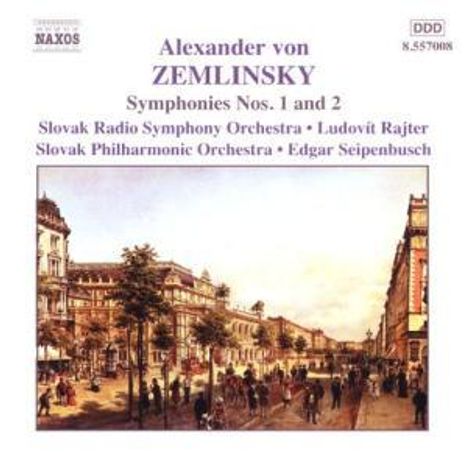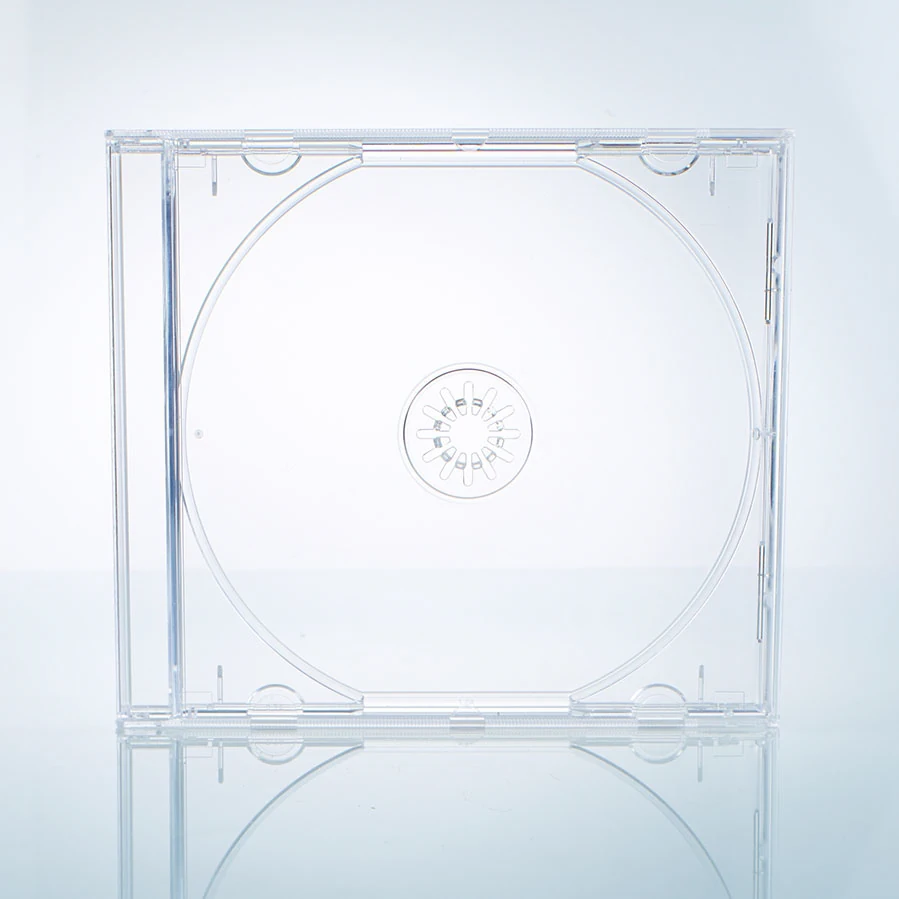Alexander von Zemlinsky: Symphonien Nr.1 & 2 auf CD
Symphonien Nr.1 & 2
Herkömmliche CD, die mit allen CD-Playern und Computerlaufwerken, aber auch mit den meisten SACD- oder Multiplayern abspielbar ist.
Lassen Sie sich über unseren eCourier benachrichtigen, falls das Produkt bestellt werden kann.
- Künstler:
- RSO Bratislava, Rajter; Slovak Philharmonic Orchestra, Seipenbusch
- Label:
- Naxos
- Aufnahmejahr ca.:
- 1989/1985
- UPC/EAN:
- 0747313200825
- Erscheinungstermin:
- 10.2.2003
Ähnliche Artikel
Zemlinskys 1892 entstandene Erste Symphonie, die am Ende seiner Studienzeit bei Fuchs entstand, ist ein durch und durch gelungenes Werk. Zemlinskys Sinfonie ist Teil der reichen klassischen sinfonischen Tradition in Wien. Ohne die unverhohlene Ironie von Strauss oder die diffuse Originalität von Mahler stellt sie ein hervorragendes Beispiel für die Sinfonie des späten neunzehnten Jahrhunderts dar. Auf den manchmal grandiosen und manchmal bedrohlichen ersten Satz folgt ein lebhaftes Scherzo mit einer lebhaft kompetenten Besetzung und einem kontrastreichen Trio. Der dritte und letzte Satz, der als Sehr innig und breit bezeichnet wird, beginnt mit einem Hauch lyrischer Introspektion und enthält Momente von bemerkenswerter Schönheit, während er sich seinem nachdenklichen Ende nähert.
Im Jahr 1897, dem Jahr der Uraufführung seiner Oper Sarema, vollendete Zemlinsky seine Zweite Symphonie, ein Werk, das beim Publikum ein positives Echo finden sollte. Die Sinfonie beginnt mit einem Satz, der mit einer Anregung Wagners eine eigene, unverhohlene Erhabenheit besitzt. Es folgen ein dramatisches Scherzo und ein romantisch kontrastiertes Trio. Der langsame, mit Adagio bezeichnete Satz hat etwas von der Schärfe Mahlers, die am Ende glücklich aufgelöst wird. Es folgt ein Schlusssatz, der diese Stimmung der Heiterkeit mit etwas Unheilvollerem unterbricht, bevor der Konflikt endgültig gelöst wird.
Product Information
Zemlinsky’s First Symphony, written in 1892, came at the close of his period of study with Fuchs and is a thoroughly competent work. Zemlinsky’s symphony is part of the rich classical symphonic tradition in Vienna. Lacking the blatant irony of Strauss or the diffuse originality of Mahler, it represents an excellent example of the late nineteenth century symphony. Its sometimes grandiose and sometimes ominous first movement is followed by a lively scherzo, with its vividly competent scoring and contrasted trio. The third and final movement, marked Sehr innig und breit, opens with an air of lyrical introspection and contains moments of considerable beauty, as it moves towards its pensive conclusion.
In 1897, the year in which his opera Sarema was first performed, Zemlinsky completed his Second Symphony, a work that was to attract a favourable reaction from the public. The symphony opens with a movement that has its own forthright grandeur, with a suggestion of Wagner. There follows a dramatic scherzo and a romantically contrasted trio. The slow movement, marked Adagio, has about it something of the poignancy of Mahler, happily resolved in conclusion. It is followed by a final movement that interrupts this mood of serenity with something more ominous, before the final resolution of conflict.
Disk 1 von 1 (CD)
-
1 Symphony in D minor: I. Allegro ma non troppo
-
2 Symphony in D minor: II. Scherzo: Allegro scherzando
-
3 Symphony In D Minor: Iii. Sehr Innig Und Breit
-
4 Symphony in B flat major: I. Sostenuto
-
5 Symphony in B flat major: II. Scherzo
-
6 Symphony In B Flat Major: Iii. Adagio
-
7 Symphony in B flat major: IV. Moderato
Mehr von Alexander von Z...
-
Alexander von ZemlinskyDie Seejungfrau (Fantasie nach Andersen)CDVorheriger Preis EUR 17,99, reduziert um 0%Aktueller Preis: EUR 7,99
-
Alexander von ZemlinskyDie Seejungfrau (Fantasie nach Andersen)CDAktueller Preis: EUR 19,99
-
Christiane Karg - Verwandlung (Lieder eines Jahres)CDVorheriger Preis EUR 19,99, reduziert um 0%Aktueller Preis: EUR 5,99
-
Herbert Schuch - The OehmsClassics Recordings8 CDsVorheriger Preis EUR 24,99, reduziert um 0%Aktueller Preis: EUR 14,99










